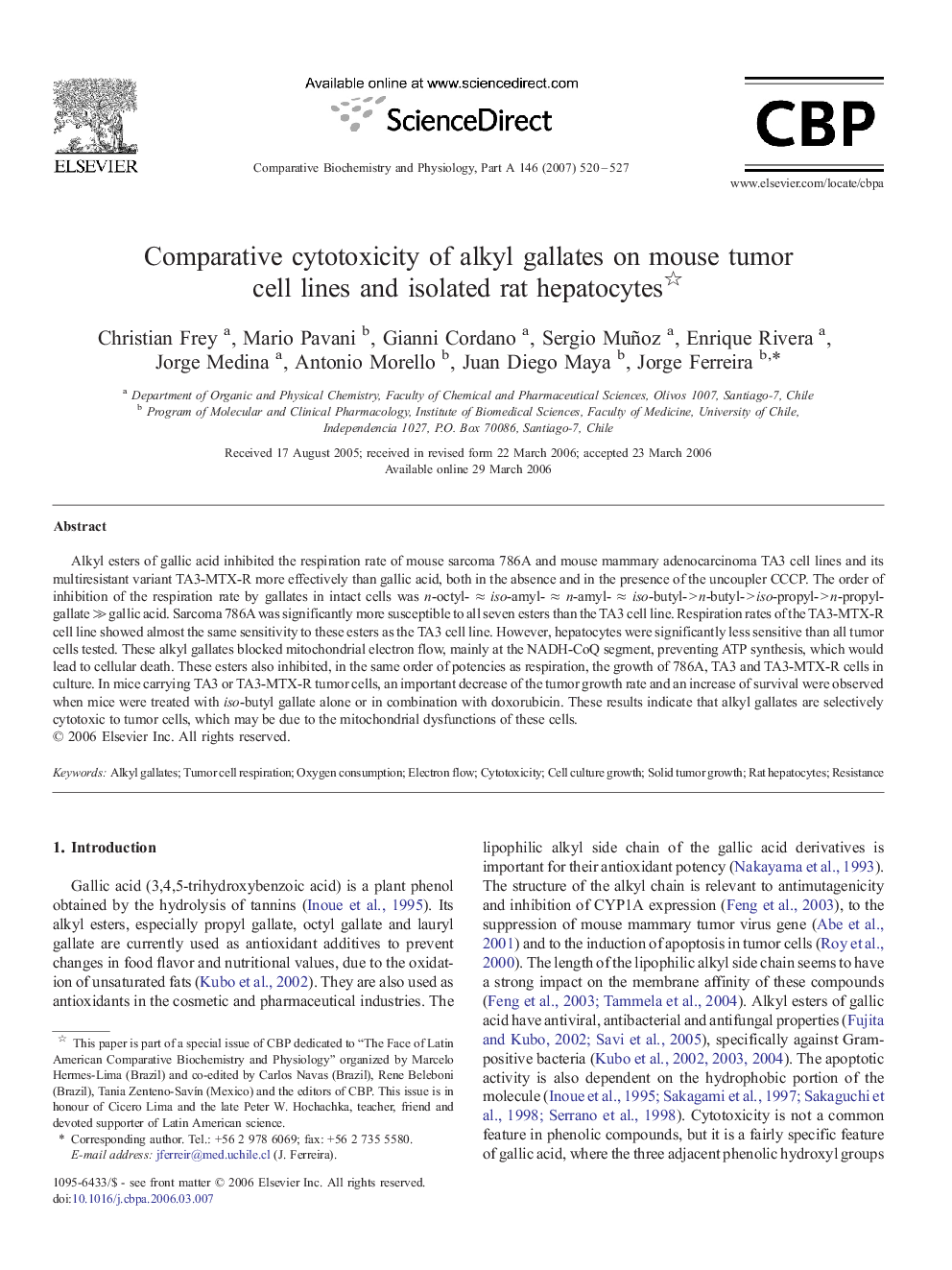| Article ID | Journal | Published Year | Pages | File Type |
|---|---|---|---|---|
| 1974872 | Comparative Biochemistry and Physiology Part A: Molecular & Integrative Physiology | 2007 | 8 Pages |
Alkyl esters of gallic acid inhibited the respiration rate of mouse sarcoma 786A and mouse mammary adenocarcinoma TA3 cell lines and its multiresistant variant TA3-MTX-R more effectively than gallic acid, both in the absence and in the presence of the uncoupler CCCP. The order of inhibition of the respiration rate by gallates in intact cells was n-octyl- ≈ iso-amyl- ≈ n-amyl- ≈ iso-butyl- > n-butyl- > iso-propyl- > n-propyl-gallate ≫ gallic acid. Sarcoma 786A was significantly more susceptible to all seven esters than the TA3 cell line. Respiration rates of the TA3-MTX-R cell line showed almost the same sensitivity to these esters as the TA3 cell line. However, hepatocytes were significantly less sensitive than all tumor cells tested. These alkyl gallates blocked mitochondrial electron flow, mainly at the NADH-CoQ segment, preventing ATP synthesis, which would lead to cellular death. These esters also inhibited, in the same order of potencies as respiration, the growth of 786A, TA3 and TA3-MTX-R cells in culture. In mice carrying TA3 or TA3-MTX-R tumor cells, an important decrease of the tumor growth rate and an increase of survival were observed when mice were treated with iso-butyl gallate alone or in combination with doxorubicin. These results indicate that alkyl gallates are selectively cytotoxic to tumor cells, which may be due to the mitochondrial dysfunctions of these cells.
